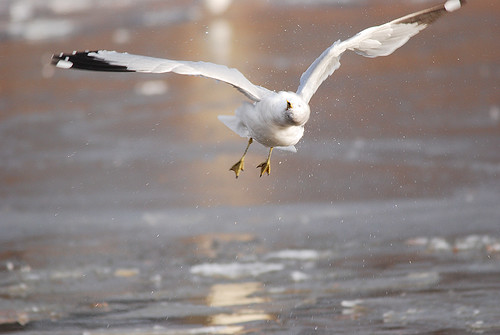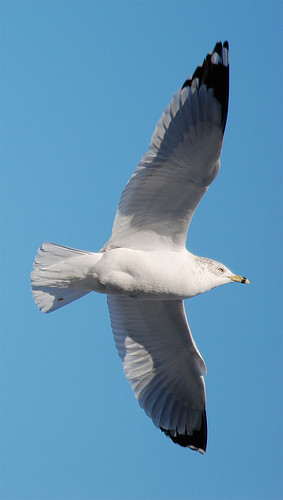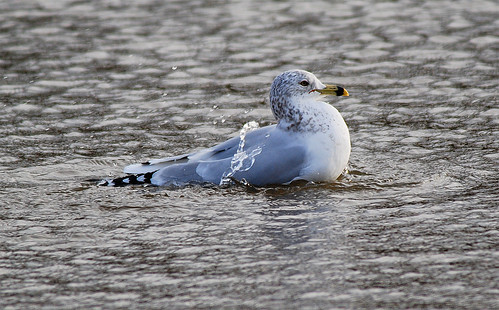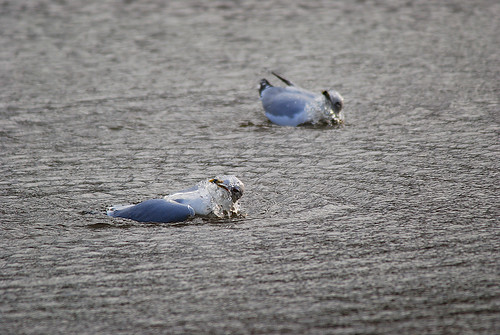
The ponds around our development have actually been surprisingly productive since we moved in a year and a half ago. Productive being a relative term and taking into account that we live right off of a very busy section of Route 1 - but we've seen Belted Kingfisher, a number of herons and egrets, and the usual assortment of gulls and waterfowl. Driving by last week, however, I spotted something among the Canada Goose flock in the main entrance pond. After parking and grabbing my camera, I headed back out and took the two-block walk back to the pond. To my susprise, there was a female Bufflehead calmly floating in the middle of it!

Of course if you want to see Buffleheads during winter, you can travel to any number of spots and reliably find them. To have one in my somewhat urban/suburban neighborhood was a real treat, though.
 Outside of the Bufflehead, it's been mostly the dreaded Gs - gulls and geese. Sure, there's always the slim chance of a Cackling Goose or an Iceland Gull mixed in, but so far it's been what you would expect. Ring-Billed and Herring Gulls, and lots of Canada Geese.
Outside of the Bufflehead, it's been mostly the dreaded Gs - gulls and geese. Sure, there's always the slim chance of a Cackling Goose or an Iceland Gull mixed in, but so far it's been what you would expect. Ring-Billed and Herring Gulls, and lots of Canada Geese. Now, I won't pretend that I appreciate every individual poop-producing Canada Goose and parking lot Ring-Billed Gull. There's just too damn many of the things. When you do stop a take a closer look, though, you realize these birds have just as many cool adaptations and behaviors as your favorite pelagic bird or the most interesting raptor you can find.
Now, I won't pretend that I appreciate every individual poop-producing Canada Goose and parking lot Ring-Billed Gull. There's just too damn many of the things. When you do stop a take a closer look, though, you realize these birds have just as many cool adaptations and behaviors as your favorite pelagic bird or the most interesting raptor you can find.
The tightly compressed, oily feathers of gulls keep near freezing water from coming into contact with their bodies. This allows them to swim, forage, and bathe without worrying about the water temperature. It's pretty incredible how the water just glides off their backs.

 I found these neat "ice balls" as well (photo below). Not sure exactly what's going on here, but for whatever reason it appears the frozen water around the tips of this vegeation stayed frozen while the rest of the ice in this section of the pond melted.
I found these neat "ice balls" as well (photo below). Not sure exactly what's going on here, but for whatever reason it appears the frozen water around the tips of this vegeation stayed frozen while the rest of the ice in this section of the pond melted.
This Friday the forecast is calling for a sweltering 43 degrees, so make sure to get outdoors and enjoy the winter season!





1 comment:
Wow! Awesome pictures!
Post a Comment